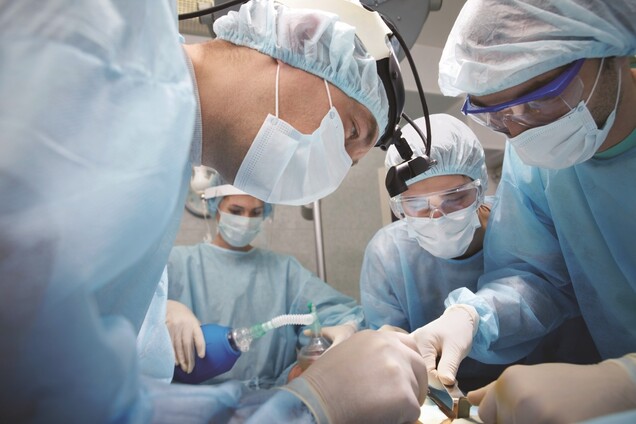- Adult Heart DiseaseDiseases of the arteries, valves, and aorta, as well as cardiac rhythm disturbances
- Pediatric and Congenital Heart DiseaseHeart abnormalities that are present at birth in children, as well as in adults
- Lung, Esophageal, and Other Chest DiseasesDiseases of the lung, esophagus, and chest wall
- ProceduresCommon surgical procedures of the heart, lungs, and esophagus
- Before, During, and After SurgeryHow to prepare for and recover from your surgery
April 13, 2018

Almost all of my encounters with new patients begin with the patient’s history and physical. This is when I learn about the problem that brought them to me and what symptoms they are experiencing. Often during these visits, the patients tell me that Dr. X did their last heart surgery. When I ask them what heart surgery they had, they explain that they had stents put in. I then carefully explain to my patients that what they underwent was a coronary stent procedure and that Dr. X is a cardiologist and that I’m a cardiac surgeon. Sometimes, I get looks of confusion about this difference. Here is some clarification.
Cardiologists are specialists in cardiovascular disease and are able to treat conditions ranging from severe hypertension to elevated cholesterol to heart rhythm problems. They also are able to perform procedures that both help diagnose and treat many cardiac conditions. For example, cardiologists can perform stress tests to uncover coronary disease, conduct echocardiograms to diagnose holes in the heart or problems with heart valves, and order monitoring of the heart to uncover rhythm issues like atrial fibrillation. In addition, specialized cardiologists may perform procedures to treat these specific problems. Interventional cardiologists can place stents in clogged arteries, close small holes in the heart, and place specialized devices in the heart. Other cardiologists may do procedures to treat rhythm problems such as ablation procedures for atrial fibrillation or implant pacemakers or defibrillators to treat more serious rhythm problems of the heart.

Doctors who specialize in the field of cardiology typically begin their training in general internal medicine after graduating from medical school. The internal medicine training involves 3 years of instruction in the general systems of the body: gastrointestinal, pulmonary, neurological, and cardiovascular. After completing this training, another 4-6 years are required to become a cardiologist, with an additional year possible if the goal is a highly specialized area of cardiology. All of this training results in a doctor who can diagnose and treat patients for their cardiovascular problems in immediate situations and long term, often for the rest of their lives (in conjunction with their primary care physician).
Cardiac surgeons come from a very different background. Once they graduate from medical school, surgeons enter a surgical residency that lasts from 5 to 7 years. Following this residency in general surgery (much like the cardiologists’ background in general internal medicine), the cardiac surgeon spends 2-4 additional years training in the area of cardiac surgery. A “general” cardiothoracic surgeon learns to operate on the organs of the chest and upper abdomen. They work on the esophagus, the lungs, the heart, its vessels and valves, and major large blood vessels in the chest such as the aorta or pulmonary artery. These surgeons may choose to further specialize as cardiac surgeons and limit their practice to the heart arteries and heart valves. Cardiothoracic surgeons usually perform their procedures through incisions that allow them to work inside the chest, either by dividing the breastbone or by working in between the ribs. Their care of the patients involves counseling prior to surgery, performing the surgery in an operating room, and caring for the patients through recovery and rehabilitation.

The typical procedures that cardiologists perform differ from those that heart surgeons perform. However, there are some procedures that both cardiologists and cardiothoracic surgeons may perform, such as the implantation of pacemakers. In addition, procedures like transcatheter aortic valve replacement (TAVR) are typically performed together by cardiologists and heart surgeons. Other procedures are unique to each specialty, such as:
- Placing stents in heart arteries and performing invasive diagnostic tests such as transesophageal echocardiography (TEE) – performed by cardiologists
- Coronary artery bypass grafting (CABG) surgery – performed by cardiothoracic surgeons
The other major difference is while cardiothoracic surgeons may perform complex repairs on the heart and its associated structures, they typically limit their treatment of the patient to the time surrounding the operation and during recovery. Cardiologists often follow their patients for much longer periods of time, often in conjunction with a primary care physician to help monitor and treat more long-term cardiovascular conditions.
In the end, patients benefit from having both specialists available to help with sorting out treatments and technologies related to the ever-increasing complexity of cardiovascular disease.
For more information, view the video “What Is a Cardiothoracic Surgeon?”
The opinions expressed in this article are those of the author and do not necessarily reflect the views of The Society of Thoracic Surgeons.

